Political Systems of Norway and Austria (1)
The political systems (in Norway and Austria)
Our idea is to work on the topic "The political systems in Norway and Austria". The aim of this project to learn more about politics in our and the foreign country. To get there, we will do group works like disscussions, research and interviews to compare the elective systems, different parties and the people's attitude towards politics.
- Our working plan and time table
- Unser Thema: ”The political system in Austria and Norway.”
- Unsere Namen: Franziska, Aurora, Ellen-Marie, Marlene
- Was interessiert uns daran besonders? Konkrete Ideen sammeln. Was wollen wir herausfinden? Was wollen wir voneinander wissen?
Differences in the elective system between Austria and Norway, popularity of certain parties, differences between the parties, monarchy in Norway - Wie können und wollen wir das herausfinden? (Recherche, Befragungen, Beobachtungen, ...)
Internet and own experiences - Was tun wir gemeinsam? Wie arbeiten wir zusammen? Wie tauschen wir unsere Ergebnisse aus?
Comparisons, exchange, discussion - Konkreter Arbeits- und Zeitplan:
Was
|
Bis wann
|
Wer ist zuständig?
|
|
|
|
|
|
|
|
|
|
|
|
|
- Elective System Austria
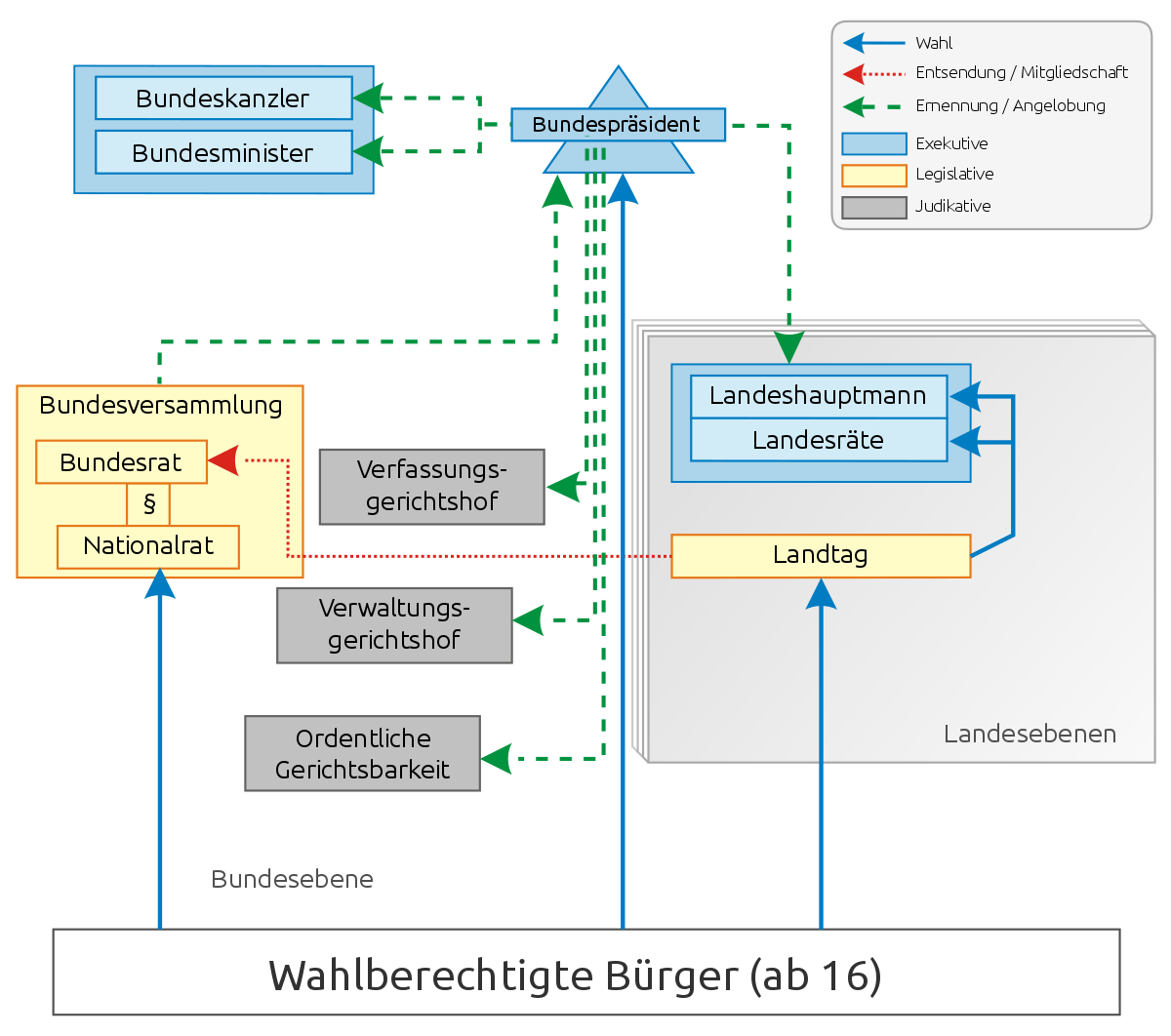
Austria is a parliamentarian republic/democracy and has a multi-party system, which means that there are multiple parties you can vote for. People are first allowed voting when they turn 16. Other criterion are that you should be mental stable and sane and not in prison.
There are 3 political branches:
- The executive branch, which includes the federal president, the federal chancellor, the federal ministers, the provincial governors and all members of the provincial government.It is their job execute and control the law.a. the federal president gets voted from the people every four years and is primarily there for presentation of the country. Beside that he is the supreme commander of the military and is also responsible for the swearing-in ceremony of the members of the government. He concludes treaty and is able to discharge the federal chancellor.b. the federal chancellor and the federal minister build together the government and get appointed by the federal president.c. the provincial governors and all members of the provincial government, build together the government of the different states and get voted from the state parliament.
- The legislative branch, which includes the state parliament, the federal council and the national council (both councils together are building the federal convention). It is their job to determine the law.a. the state parliament gets voted by the people and is responsible for voting the provincial chancellor and all member of the provincial government. They also determine state laws and state budget.b. the federal council and the national council, together the federal convention are there for legislation and control.
- The judiciary branch, which includes the constitutional court, the higher administrative court and the ordinary jurisdiction. It is their job to case law.
- The Norwegian political system
The political system in Norway is a constitutional monarchy with a parliamentary system of government. That means that we have a king, that is the head of government, and a prime minister that is head of parliament. The Norwegian has three parts, the parliament that makes the laws, the government that enforce the laws, and the courts that judges based on the laws.
The election system
We vote for representatives for Storting, parliament, fylkesting, county council, and kommunestyrer, municipal council, through general election. The representatives are organized in the different political parties, and the people vote for witch party they want to get in to parliament. The voting happens every 4 years, and everyone over 18 can vote. The parties get mandates from 150 seats in the parliament from how many of the peoples votes the party got in the election. As well as the 150 seats there are 19 leveling mandates which is meant to give the smaller parties more power. If a party has less than 4 percent of the people’s votes, they don’t get any of the leveling mandates.
We also vote for the municipal and county council in a similar way, also every 4 years, between parliament elections.
- Aktueller Zeitungsartikel
I think the article connects with our topic, because it is about politics in Norway and also shows a little bit of the right-winged side of Norway which is also a topic we are focusing on.
Deutsche Zusammenfassung:
In dem Artikel vom 20. März, erschienen im „Standard“, geht es um den Rücktritt der norwegische Justizministerin Sylvi Listhaug kurz vor einem Misstrauensvotum gegen sie.
Listhaug hatte zuvor Ärger auf sich gezogen als sie in einem Facebook-Post der sozialdemokratischen Arbeiterpartei Norwegens vorwarf, „die Rechte von Terroristen wichtiger zu nehmen als die Sicherheit des Landes“.
Hintergrund dieses Beitrags war die Ablehnung eines Gesetzesvorlage durch die Sozialdemokraten, die es dem Staat ermöglichen sollte, bei Terrorismusverdacht eine sofortige Abschiebung ohne Richter zu vollziehen.
Mit diesem Post stieß sie sogleich auf heftige Entrüstung und trotz einer Entschuldigung forderte die Opposition ihren Rücktritt.
De Justizministerin schaffte ihren Rücktritt jedoch nicht ohne eine kleine Stichelei gegen die norwegische Regierung, welche ihrer Meinung nach durch diese Diskussion in einen „Kindergarten“ verwandelt worden war und beschwerte sich, „ Das war eine reine Hexenjagd, deren Ziel war, die Meinungsfreiheit zu knebeln.“
Short English Synopsis:
The text I read was about the retirement of the Norwegian minister of justice Sylvi Listhaug.Before her retirement she met trouble with a post she posted on Facebook where she charged the social democratic work party of Norway to “take the laws of terrorists more serious then the safety of the country”.
Everybody was outraged and the opposition demand her retirement.
Source:
https://www.derstandard.de/story/2000076462499/norwegens-justizministerinlisthaug-trat-vor-misstrauensvotum-zurueck
- Aktueller Zeitungsartikel
This article is about the latest election in Norway in September. The winner was the socialist labour party but the new minority coalition consists os the conservative Høyre, the liberal party and the right-winged party FrP. The government is dependent on the support of the christian party. The goals of the different, ruling parties vary widely and their compatability is hard to achieve, for example work against climate change, increasing the quality of life, stricter laws against burkas and hijabs and a stronger refugee regulation.
In my opinion this article is relevant for our topic because it sums up the main ideas of the different parties and compares the corrent political situation in Norway to Austrian politics in easily understandable words. It gives a good overview and the possibility of disscussing and questioning politics and politicians in Norway even as a foreigner.
Source:
http://www.nachrichten.at/nachrichten/politik/aussenpolitik/Norwegen-hat-neue-bürgerlich-konservative-Regierung;art391,2786726
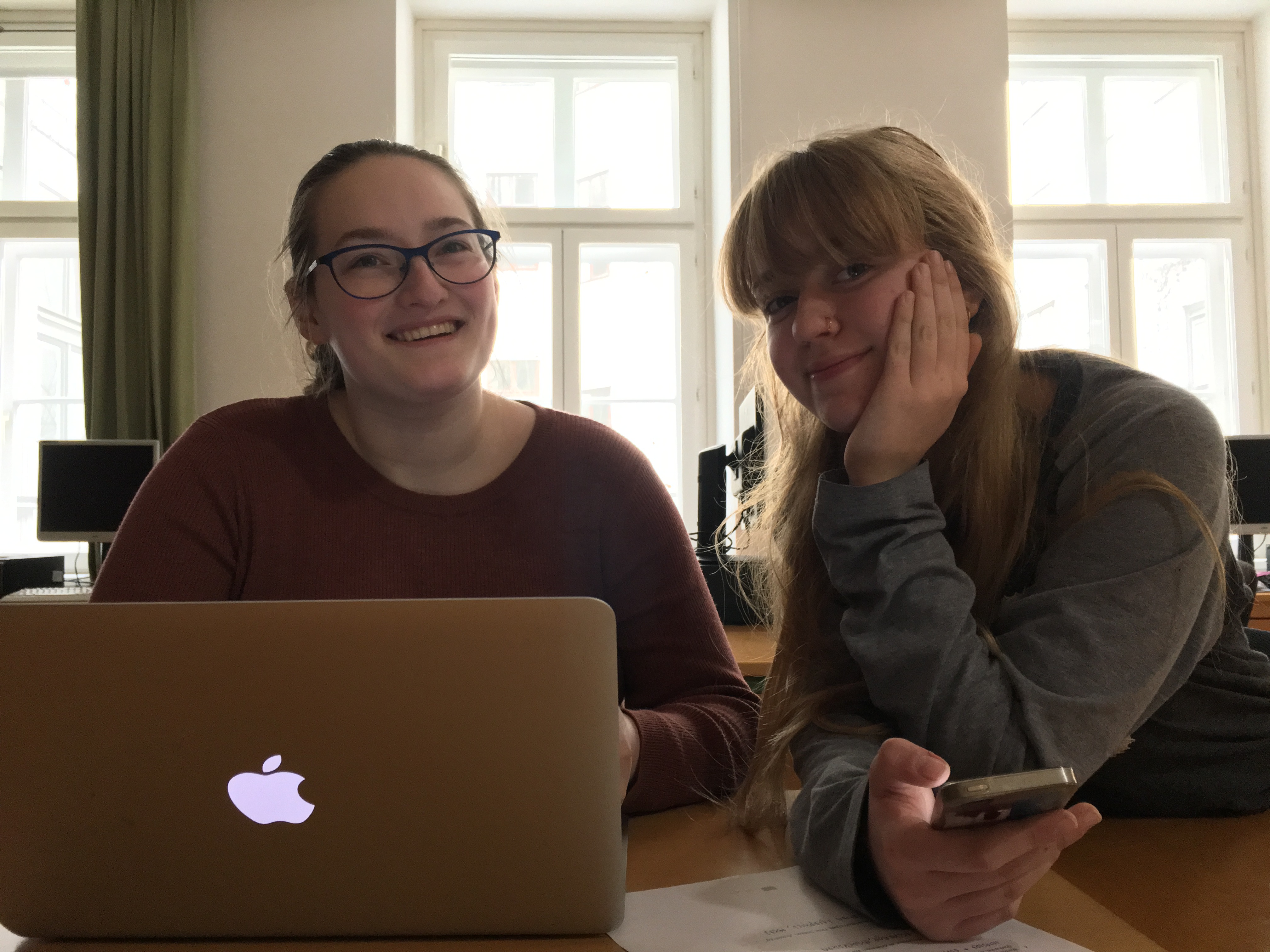 (8.3.2018, Vienna - project work)
(8.3.2018, Vienna - project work)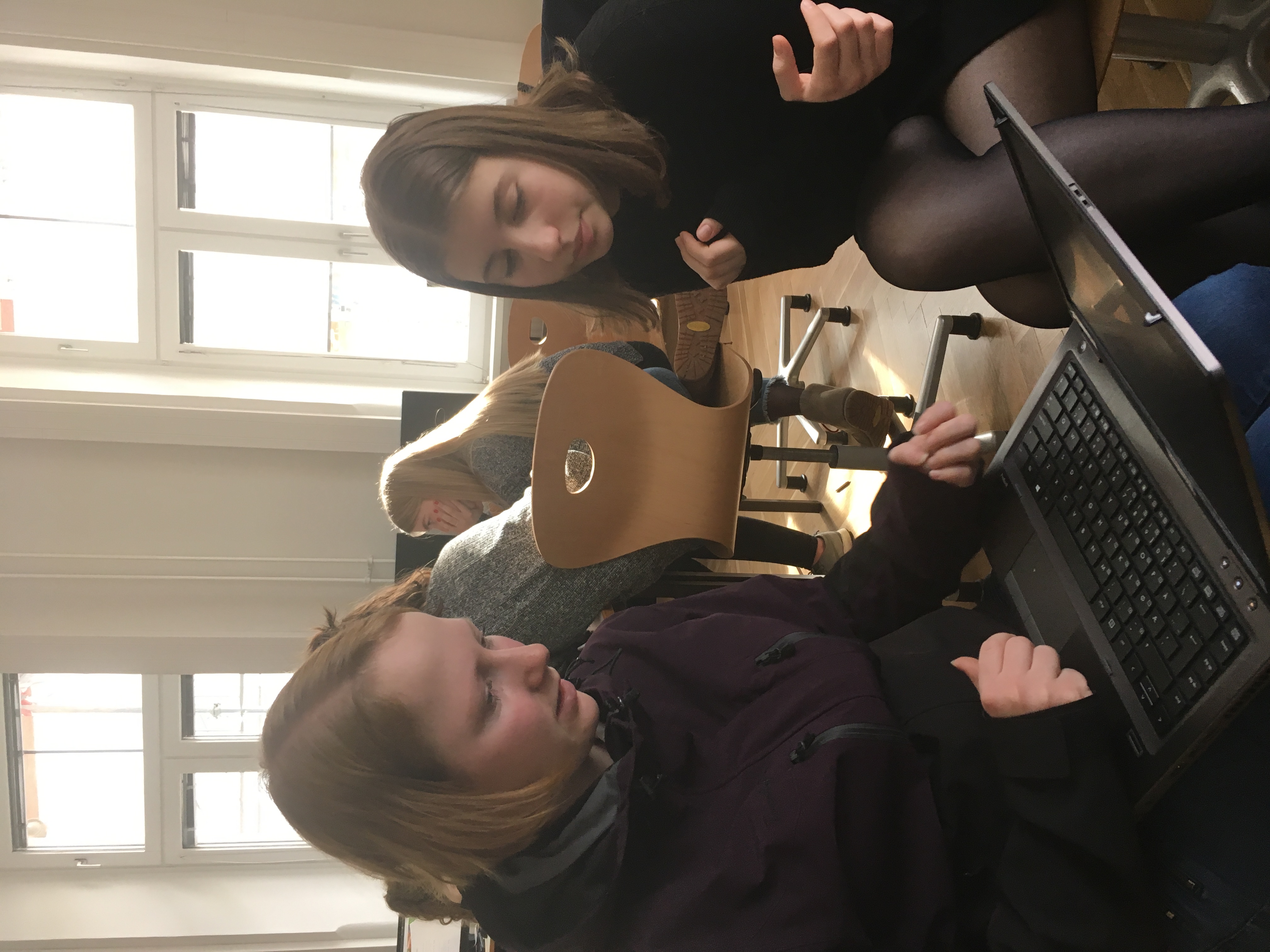 (8.3-2018, Vienna - project work)
(8.3-2018, Vienna - project work)- The week in Vienna: Project work
In total we spent two regular school days (à 6 hours) on working on our topic in Vienna.
We started working on Monday: First we formed groups, then we mindmapped our expectations of results and questions we have in context to our chosen topic which is finding the differences between the elective systems in Austria and Norway. Afterwards we came up with a time table and project plan, which we sticked to quite well until now! So summing up the first day we only did planning and organization of our work, results and expectations in the time in Vienna, Norway and the two months between our weeks together.
On the second day, Thursday, we came up with graphs, explanations and overviews of the two different elective systems of our home countries. In order to do so, we split up into two groups: Austria and Norway. We spent the day doing research, explaining and comparing. Unluckily the summary of the elective system in Austria got deleted by accident in a working hour of our modul "Go International" but we will fix it as soon as possible!
- Short summary of the Austrian Parties and their topics
SPÖ(Socialist Party Austria)
The SPÖ started as a workers party but now focusses on social issues, and equality between all socials stands and classes. On the political spectrum the SPÖ is moderately left. Values and guidelines are liberty, equality, justice and soldarity.
ÖVP (Peoples Party Austria)
The ÖVP is the conservative party and stands for christian values. The party focusses on economy and the well-being of the austrian people. The ÖVP is moderately right oriented. The core values are responsibility, economical sustainability and subsidarity.
FPÖ(Liberty Party Austria)
On the political spectrum the FPÖ is the far rightest party in Austria. They mainly focus on the safety, liberty and well-being of the Austrian people and are known for their extreme attitude towards foreigners and refugees and patriotism.
GRÜNE (Green Party)
The green party is known for their environmentlism and fight for equality between all people of different sexuality, sexual orientation, income and cultural backround. What is also important for them is democratic, politic and financial transperancy
NEOS(Neoliberal Party)
The Neos are a rather new party, they stand for economical liberty and want to simplify burocracy for companies. In contrast to other liberal parties the NEOS also stand for equality between the social stands and are left-oriented in social policy.
- The different political parties in Norway
Rødt (red)
Rødt is a socialistic party that think that the capitalism is the obstacle to a fair and solidarity society. Their goal is a society without oppression, and real gender equality is important to them. They want to abolish the private property rights to natural resources. The party is working to change the power distribution in the society fundamentally. They want the working people to get more power, and they want to establish new electoral bodies. They are also for a dominant public sector. Rødt is a revolutionary party that have gotten much of its ideology and policy from Marxist theory.
Sosialistisk venstreparti (socialist left party)
SV is a socialist party who wants a different society based on values and needs other than capitalism. They want capitalism and market forces to be replaced by solidarity, fair distribution, environmental considerations and expanded economic and political democracy. They are for a strong public sector where the state distributes the money and production, the power and materialistic goods. They are reformist, that mean that they approach a socialist society through reforms. The party was formed in opposition to foreign policy that was conducted at the time. They have a strong focus on environmental protection and sustainable development.
Arbeiderpartiet (worker party)
AP was made with workers rights and professional organizations rights as their main issues. Today, the party is a social democratic party based on a social, democratic, humanistic and socially critical basis. The keywords in the party's fundamental political views are freedom, equality and solidarity. Through solidarity, the party will take care of those who do not manage on their own. A strong public sector must finance the common good, and a progressive tax system will ensure economic redistribution. AP believes that the individual must decide on his / her own daily life. The party is reformist, which means that they use the opportunities the development gives, to improve society.
Senterpartiet (central party)
In its party program, the party does not base any of the known ideologies. In its value base, the party will build the community from below. It states that the party wants decentralization of property rights, power, capital and settlement. They also want greater equality between different groups in society, and they are opponents of the free market forces and economic liberalization. SP's goal for political work is to develop a society of free independent people who, with faith in their own abilities, take responsibility for their own lives, for the community and for nature and the environment. An important tool here is a community created by and for the individual. Freedom for the individual is important, and everyone has a shared responsibility for creating good communities.
Miløpartiet de grønne (environmental party the green ones)
The party is based on a so-called green ideology and on setting environment and sustainability ahead of economic growth. They focus on three main themes: quality of life, climate-friendly transport and renewable future. These main themes mean that the party is working for a society where people have more time for each other and put less emphasis on consumption, and where it will be easier and cheaper to choose the most environmentally friendly means of transport. They also want an end to oil production and a conversion to sustainable and renewable economies.
- Venstre (Left)
This party was founded in 1884 and is a social-liberalistic party. It’s the oldest party in Norway and focuses on the people of this country. All people schould be a part of the community. Their goal is for people to have freedom over oneself and take responsibility for one another. They also have an enviromental agenda and is the greenest party exept the enviromental party.
- Kristelig folkeparti ( Christian Democratic Party)
As the name indicates, this party stands for a christian democratic ideology. Their christian beliefs is central in their politics, like humanity, benevolence and the ten commandments. Their priorities politically is family, schools and education. They wish to nurture the welfare society, not the welfare state.
- Fremskrittspartiet (progress party)
FrP is a liberalistic party. Which means that that they put the individual in the center. They want to limit the power of the state. Their main goal is to get the taxes, fees and state control lower. Their motto is “my freedom stops where yours begin”, which means that they want to let people live their own lives if they don’t hurt anybody. They want to build down the bureaucracy.
- Høyre (right)
Høyre is a conservative party. Their politics build on a conservative society and liberal values. They want to keep the traditional values in society, and any changes must happen slowly. The changes are made to preserve. They believe that a strong market economy helps with innovation, and is the way to go. They want a strong state that take care of individual and minorities rights. Today they work towards stronger and wider private ownership than today.
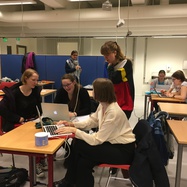
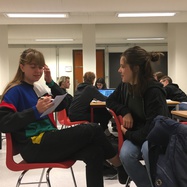
Kommentare
Kommentar veröffentlichen